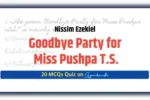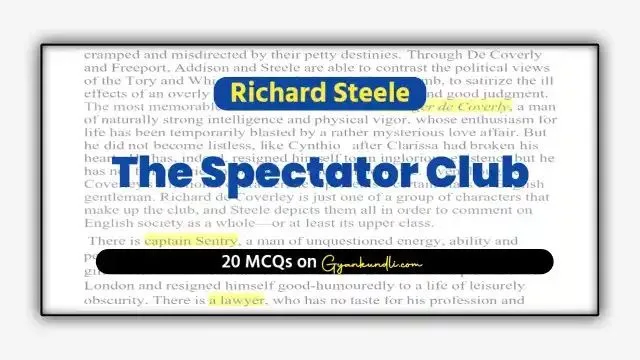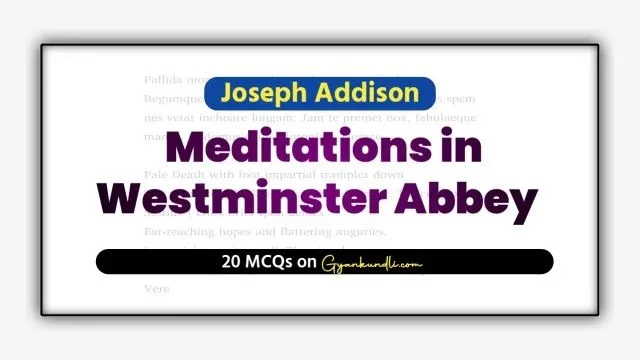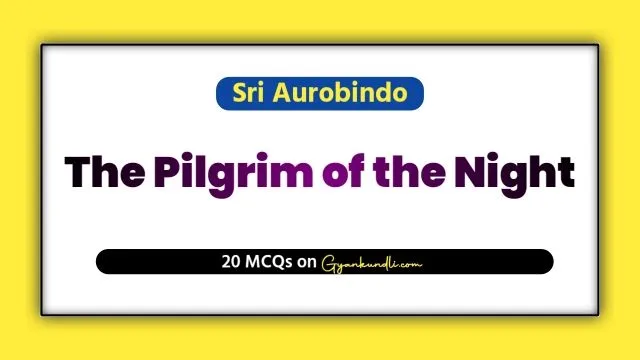The Solitary Reaper MCQ Quiz : The Solitary Reaper is one of William Wordsworth’s most loved and lyrical poems. It was first published in 1807 in Poems in Two Volumes. This poem beautifully represents the Romantic spirit — love for nature, appreciation of rural life, and emotional connection between man and nature. Wordsworth was deeply inspired by a Scottish girl he once saw reaping grain and singing in the field. The scene left a permanent impression on his mind, which he expressed in this poem.
The poem describes a Highland girl working alone in the field, cutting and binding the grain while singing a melancholic song. The poet is deeply moved by her melody, which seems sweeter than the songs of nightingales or cuckoos. Although he cannot understand the language of the song, he imagines it might be about sorrow, battles, or personal grief. Even after leaving the place, the song remains in his heart and memory.
Themes of The Solitary Reaper
-
Solitude and Nature: The reaper is alone yet content in her work, showing harmony between human life and nature.
-
Power of Imagination: Wordsworth’s imagination fills the unknown song with meaning.
-
Transience and Permanence: The song ends, but its impact on the poet’s mind is everlasting.
Text of The Solitary Reaper
Behold her, single in the field,Yon solitary Highland Lass!Reaping and singing by herself;Stop here, or gently pass!Alone she cuts and binds the grain,And sings a melancholy strain;O listen! for the Vale profoundIs overflowing with the sound.No Nightingale did ever chauntMore welcome notes to weary bandsOf travellers in some shady haunt,Among Arabian sands:A voice so thrilling ne’er was heardIn spring-time from the Cuckoo-bird,Breaking the silence of the seasAmong the farthest Hebrides.Will no one tell me what she sings?—Perhaps the plaintive numbers flowFor old, unhappy, far-off things,And battles long ago:Or is it some more humble lay,Familiar matter of to-day?Some natural sorrow, loss, or pain,That has been, and may be again?Whate’er the theme, the Maiden sangAs if her song could have no ending;I saw her singing at her work,And o’er the sickle bending;—I listened, motionless and still;And, as I mounted up the hill,The music in my heart I bore,Long after it was heard no more.
Form, Meter and Rhyme Scheme of The Solitary Reaper
| Aspect | Details |
|---|---|
| Form | The poem is a lyric in four stanzas of eight lines each. It expresses personal feelings and emotions. |
| Meter | Written mainly in iambic tetrameter (four iambic feet per line). This creates a musical and rhythmic flow. |
| Rhyme Scheme | The rhyme pattern alternates between ABABCCDD or ABABCBDD in different stanzas. |
Poetic Devices in The Solitary Reaper
-
Imagery: Vivid pictures of the Highland girl, field, and song.
-
Simile: The reaper’s song compared to the nightingale’s and cuckoo’s song.
-
Alliteration: “Single in the field,” “silence of the vale.”
-
Hyperbole: Exaggeration in praising the sweetness of her song.
The Solitary Reaper MCQ Quiz
Discover more from Gyankundli
Subscribe to get the latest posts sent to your email.
















Make videos of these questions and upload on the YouTube please
I don’t have any time to make videos. Job, Family….